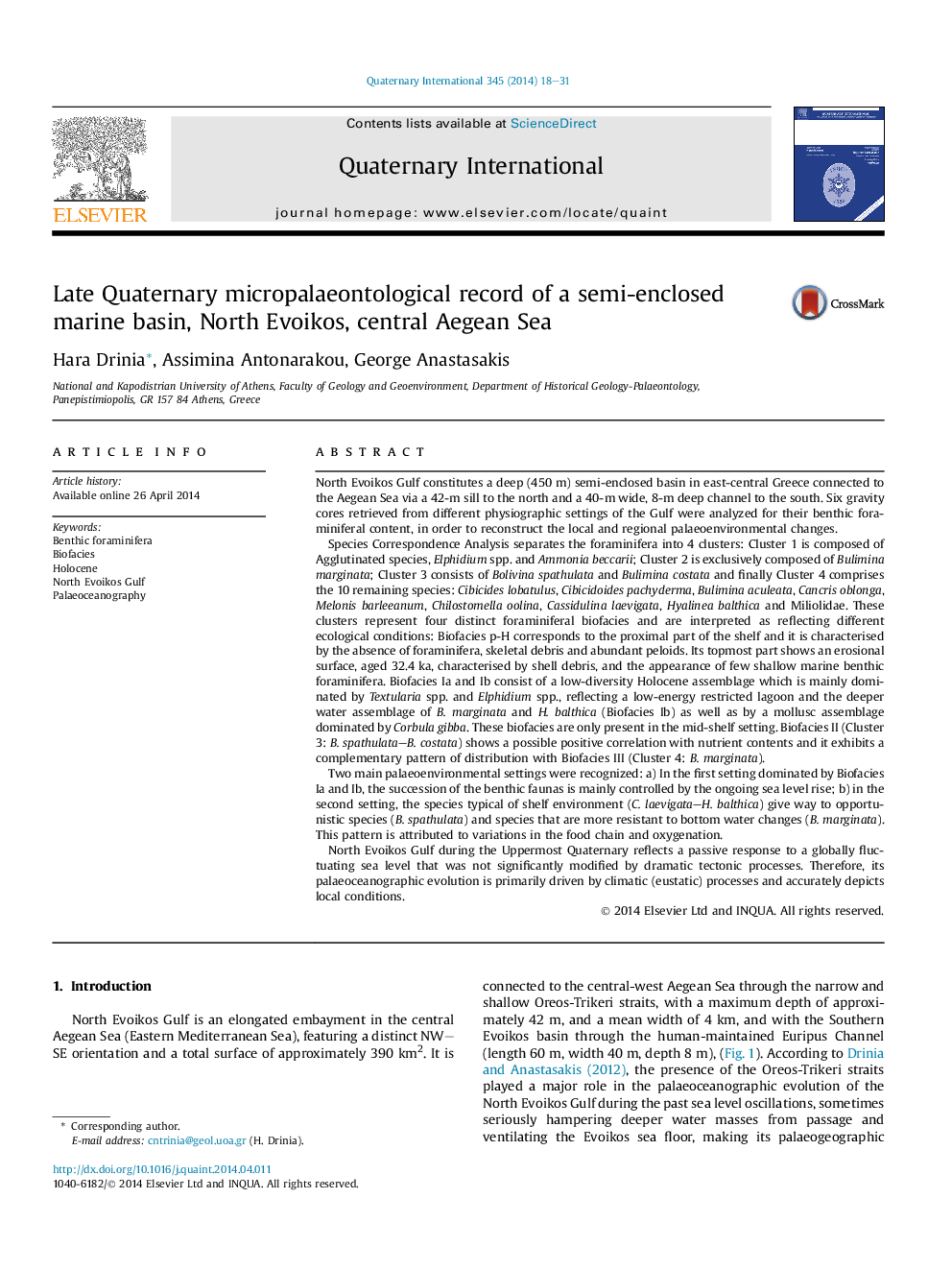| کد مقاله | کد نشریه | سال انتشار | مقاله انگلیسی | نسخه تمام متن |
|---|---|---|---|---|
| 1041182 | 1484151 | 2014 | 14 صفحه PDF | دانلود رایگان |

North Evoikos Gulf constitutes a deep (450 m) semi-enclosed basin in east-central Greece connected to the Aegean Sea via a 42-m sill to the north and a 40-m wide, 8-m deep channel to the south. Six gravity cores retrieved from different physiographic settings of the Gulf were analyzed for their benthic foraminiferal content, in order to reconstruct the local and regional palaeoenvironmental changes.Species Correspondence Analysis separates the foraminifera into 4 clusters: Cluster 1 is composed of Agglutinated species, Elphidium spp. and Ammonia beccarii; Cluster 2 is exclusively composed of Bulimina marginata; Cluster 3 consists of Bolivina spathulata and Bulimina costata and finally Cluster 4 comprises the 10 remaining species: Cibicides lobatulus, Cibicidoides pachyderma, Bulimina aculeata, Cancris oblonga, Melonis barleeanum, Chilostomella oolina, Cassidulina laevigata, Hyalinea balthica and Miliolidae. These clusters represent four distinct foraminiferal biofacies and are interpreted as reflecting different ecological conditions: Biofacies p-H corresponds to the proximal part of the shelf and it is characterised by the absence of foraminifera, skeletal debris and abundant peloids. Its topmost part shows an erosional surface, aged 32.4 ka, characterised by shell debris, and the appearance of few shallow marine benthic foraminifera. Biofacies Ia and Ib consist of a low-diversity Holocene assemblage which is mainly dominated by Textularia spp. and Elphidium spp., reflecting a low-energy restricted lagoon and the deeper water assemblage of B. marginata and H. balthica (Biofacies Ib) as well as by a mollusc assemblage dominated by Corbula gibba. These biofacies are only present in the mid-shelf setting. Biofacies II (Cluster 3: B. spathulata–B. costata) shows a possible positive correlation with nutrient contents and it exhibits a complementary pattern of distribution with Biofacies III (Cluster 4: B. marginata).Two main palaeoenvironmental settings were recognized: a) In the first setting dominated by Biofacies Ia and Ib, the succession of the benthic faunas is mainly controlled by the ongoing sea level rise; b) in the second setting, the species typical of shelf environment (C. laevigata–H. balthica) give way to opportunistic species (B. spathulata) and species that are more resistant to bottom water changes (B. marginata). This pattern is attributed to variations in the food chain and oxygenation.North Evoikos Gulf during the Uppermost Quaternary reflects a passive response to a globally fluctuating sea level that was not significantly modified by dramatic tectonic processes. Therefore, its palaeoceanographic evolution is primarily driven by climatic (eustatic) processes and accurately depicts local conditions.
Journal: Quaternary International - Volume 345, 29 September 2014, Pages 18–31